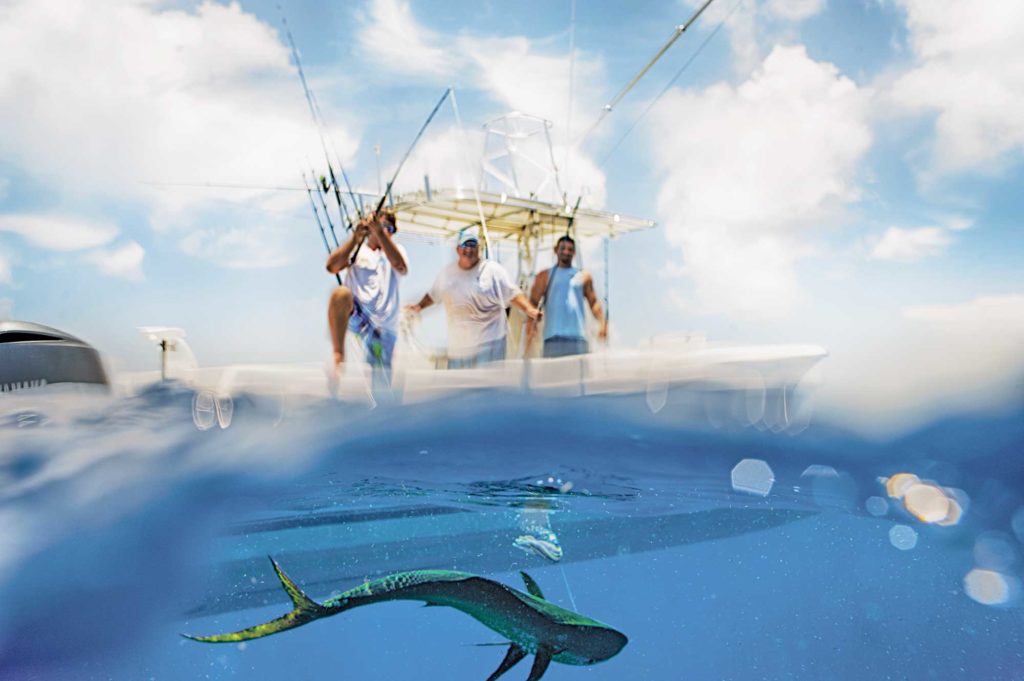
To many West Coast anglers, the thought of catching a dorado (dolphin in East Coast angling circles) often means a trip to the Baja Peninsula. But to people who speak the religion of Southern California offshore fishing, the gospel is the anticipation of the midsummer arrival of dorado from those Baja waters, when the local offshore kelp paddies draw schools of these beautiful fish.
As surface water temps warm to the lower 70s, reports start coming in from the San Diego-based long-range fleet that the dorado are on their way north. You can almost set your clock to their arrival by mid-July, when dorado come well within the range of smaller craft leaving San Diego, Mission Bay, Dana Point, Huntington, Long Beach, and even Marina Del Rey. At this time, these concentrations of schoolie dorado arrive within 15 to 30 miles of the mentioned harbors.
Fishing techniques vary depending on angler preference, and in Southern California, there can be a wide variety.
Find Dorado off the California Coast
With inexpensive live bait such as anchovies and sardines available in every local marina, many anglers tank up with a scoop or two of fresh live ones, then stick with live bait as their method of choice, using a hook sized in proportion to the bait (usually a J hook because dorado are difficult to catch with circle hooks).
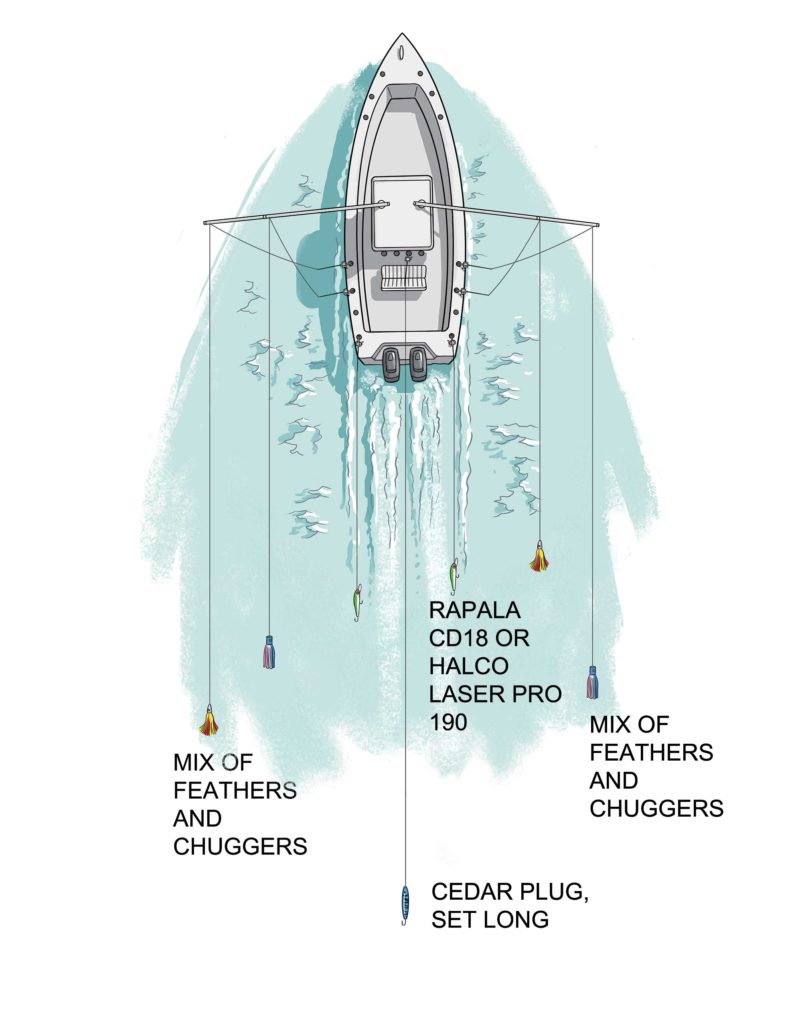
Searching offshore in the vicinity of working birds or tide rips that concentrate kelp paddies, anglers begin trolling a pattern of mixed feathers or small chuggers off the riggers, a few Rapala CD 18s or Halco Laser Pro 190s on the flat lines, and even a cedar plug way back. This spread presents a nice mix for open-water dorado, and it also attracts yellowfin and bluefin tunas, which frequent the same areas.
Once hooked up, the strategy is to chum with live bait in the prop wash to coax the school to the boat, then hold it there. Dorado respond well to chumming, but live bait isn’t always essential. Dorado are voracious feeders, and any type of cut bait is effective in keeping them active in the slick.
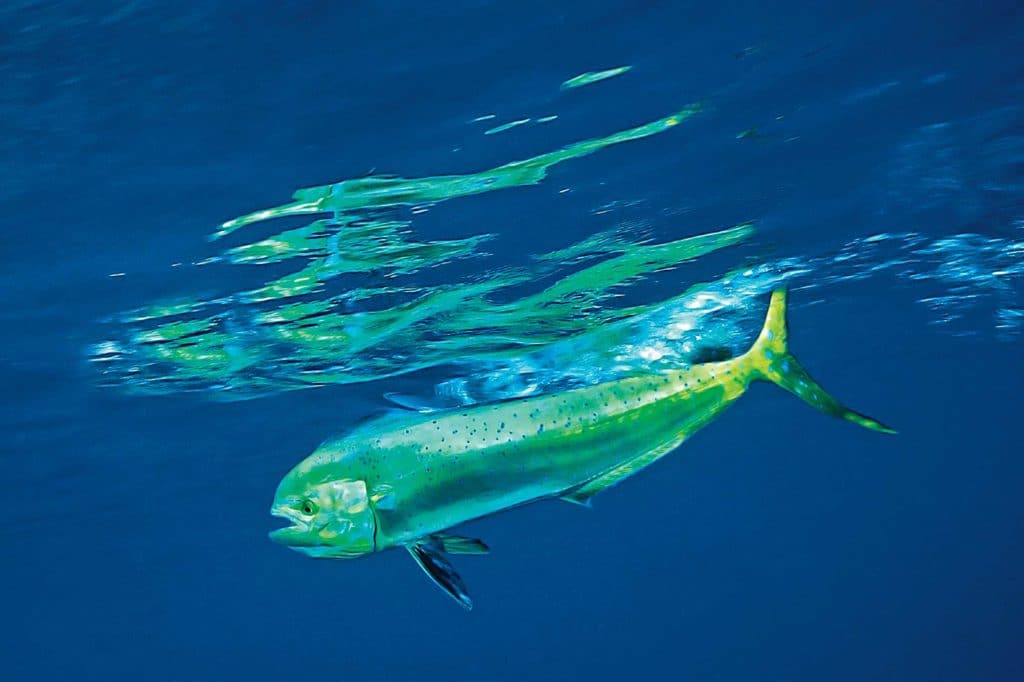
If I happen to incidentally catch a mackerel, bonito or skipjack, I always put it on ice for chunking. If I know I will be fishing dorado, I make it a point to have several pounds of restaurant-quality squid aboard as well. This can be purchased at most Asian markets at reasonable prices. Nothing is more irresistible to a dorado than a piece of squid.
Dorado School Near Kelp Paddies
The most consistent way of finding dorado is similar to the East Coast strategy. But instead of the sargassum weed lines, anglers on the West Coast look for golden-brown patches of kelp. These strands of California kelp come from inshore forests that have been uprooted and set adrift by heavy winter storms and high surf.
Such rafts of natural flotsam provide the perfect shelter for a bevy of small baitfish, and provide the spacial orientation for dorado to call home. I’ve spent many hours freediving kelp paddies off Southern California, and it’s always interesting to watch the behavior of paddy-associated fish as they wander in, around, and back out of these kelp-paddy vicinities. The fish will often literally swim in circles around them, then momentarily go away from the paddy on short-distance feeding forays, often upwind or down-current. But they always seem to make it back, and regularly stay with the same kelp paddy for days or weeks.
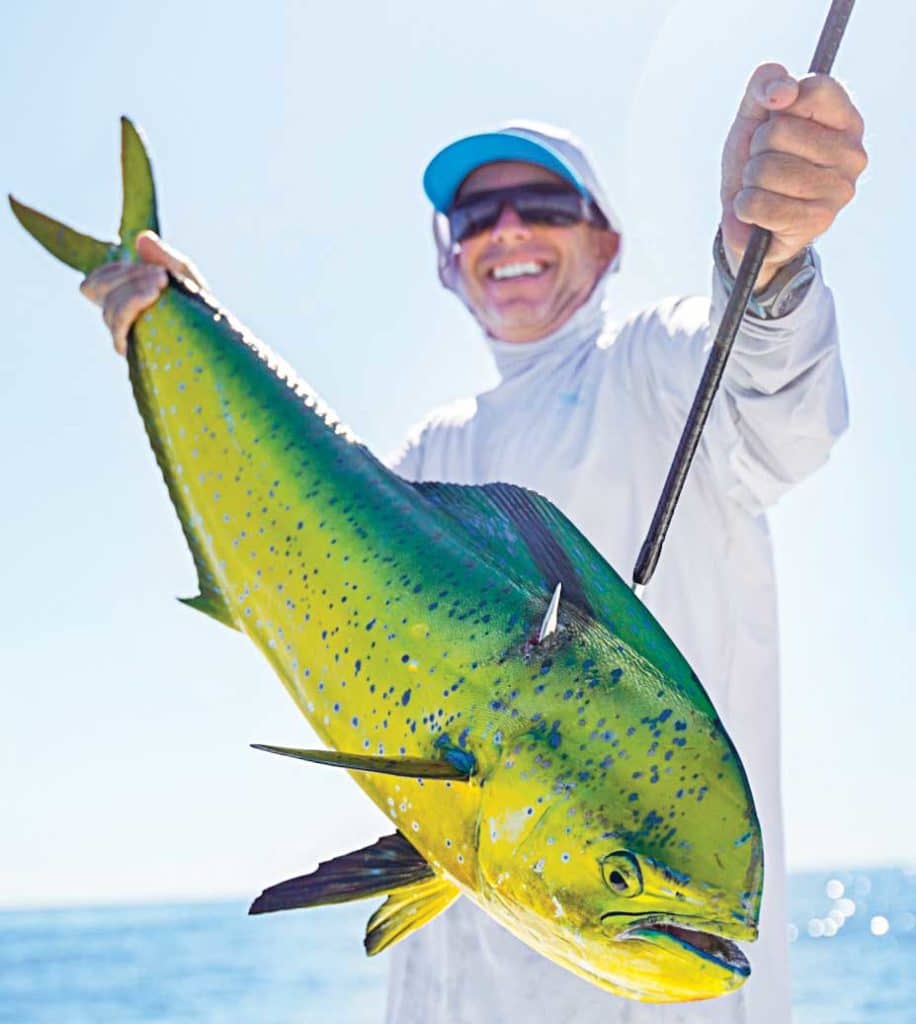
After locating a paddy, fishermen continue trolling past and toss a few handfuls of live bait or chunks near the paddy to entice a strike. When that happens, it’s time to set up a drift from the upwind side, and fish as the boat approaches and drifts past the paddy.
Fishing live bait puts vibrations in the water, which helps keep the dorado school in the vicinity. From my in-water observations, it’s a good idea to put out a bait or two with either a small egg sinker on the line or simply hooked through the anal-fin area so it swims downward.
Casting Lures for California Dorado
If you know dorado inhabit a particular paddy, but you aren’t getting bit, try casting light surface irons (metal jigs made of aluminum), then retrieve them just under the surface and watch for a boil. Or try throwing Halco Rasta 160 poppers in all directions to entice strikes.
For lure presentations at depth, seasoned anglers favor heavier jigs, plastic swimbaits, or the newest West Coast fish killers: Hookup Baits. Fish these lures in depths to 50 feet, and you can be confident that you’ve covered the paddy well. Of course, dorado isn’t the only game in town on these paddies. At any given time, the chance of hooking a nice yellowtail remains possible.
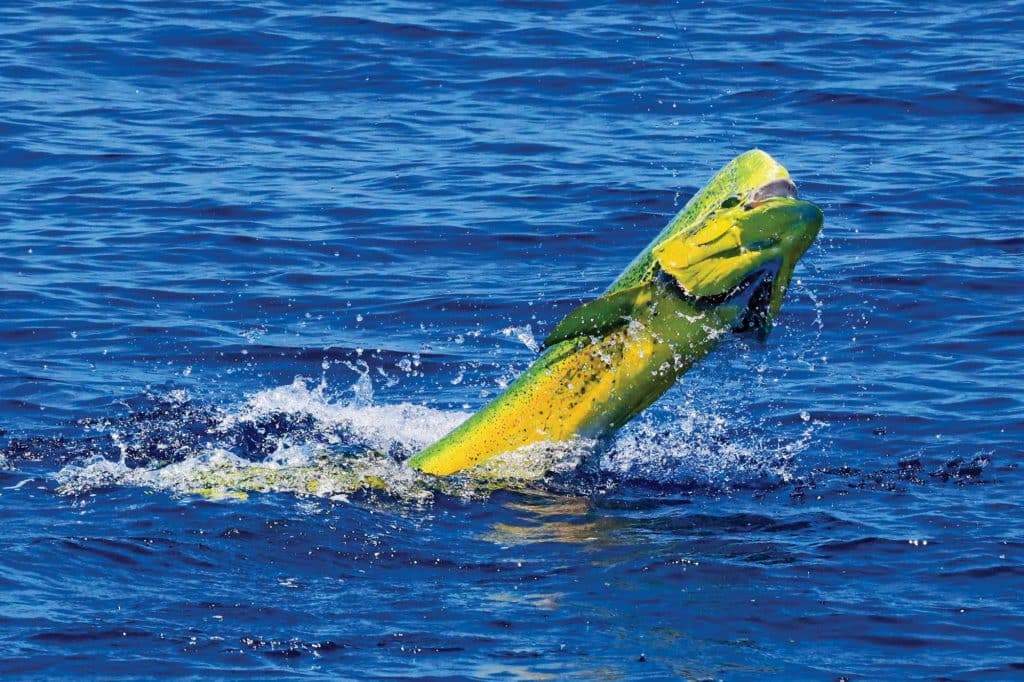
The ultimate dorado thrill is finding a paddy holding fish, getting them crazy by chumming with cut squid, then either casting flies to them or fishing surface stick-style baits from a trigger stick or light spinning rod.
I prefer fishing single-hook rigged baits to have the option of releasing what I can’t eat fresh. Dorado freeze well if vacuum-packed and frozen quickly. But putting a fresh fillet on the barbecue with teriyaki sauce and pineapple is a treat that’s tough to beat.
Dorado Head North in the Pacific
An interesting note for dorado in California waters: In times of El Niño—warm sea-surface events—dorado have been caught in northern California waters, well north of San Francisco, by anglers targeting albacore. The cold-water barrier between Santa Barbara and the Bay Area usually stops most dorado in their tracks. However, the prevailing North Pacific Current, which flows easterly from the northern Hawaiian chain, north of Midway, hits the West Coast near the Oregon-California border prior to heading southward. It is most probable these stray dorado come from Hawaiian waters as stragglers, and end up in pockets of mid-60-degree water off Humboldt and Mendocino counties.
Proven Dolphin Lures that Catch Fish
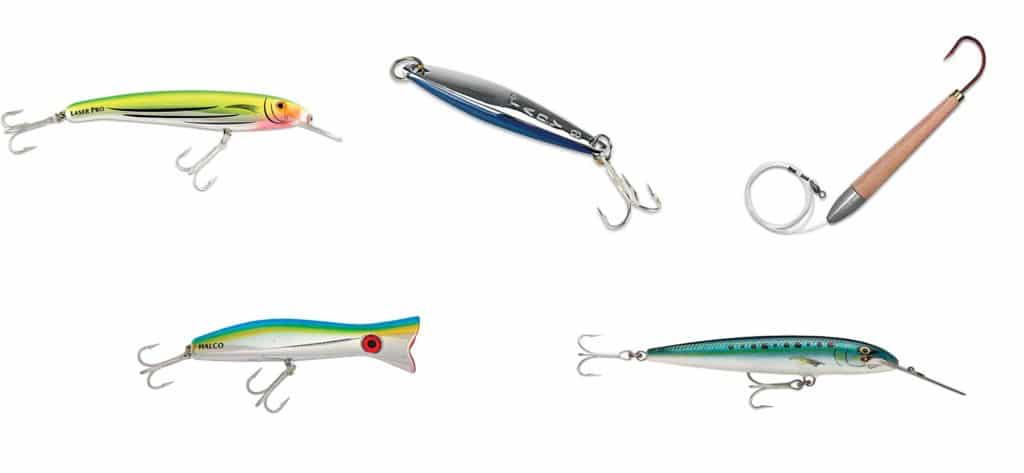
Top Row (L-R):
- Halco Laser Pro 190: Lipped plugs are effective both trolled and cast.
- Tady 9: Locally called surface irons, metal jigs can be retrieved at varying depths.
- Got-Cha Cedar Plugs: This simple design accounts for more than its share of dolphin and tuna.
Bottom Row (L-R):
- Halco Roosta Popper 160: Its cupped face creates a serious dolphin-attracting disturbance.
- Rapala CountDown Magnum 18: This big-lipped plug digs deep into the water column.









